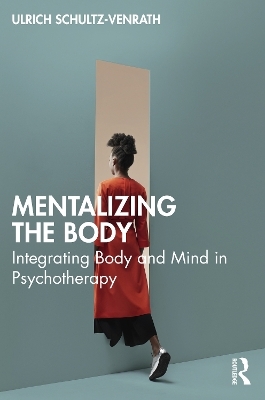
Mentalizing the Body
Routledge (Verlag)
978-1-032-38486-3 (ISBN)
Ulrich Schultz-Venrath provides insight on individual bodily phenomena within psychotherapeutic treatments – experienced by patients as well as therapists – and focuses on the importance of the intentionality of bodily symptoms and how they can be integrated in the talking cure. Mentalizing the Body expands the work of Anthony Bateman and Peter Fonagy, adding the “body mode” in contrast to the popular concept of “embodied mentalizing.” Promoting mentalizing in psychotherapy while taking the body into account helps not only patients with somatoform and eating disorders, but also those whose psychological complaints have a missing connection to the body. Schultz-Venrath provides detailed insight on the range of therapies and treatments available, from individual and group psychotherapies to body, art, and music therapy, with clinical case studies and diagrams throughout.
Mentalizing the Body will be of great interest to practitioners and researchers – from psychoanalysts and psychotherapists to psychiatrists and psychologists seeking to understand the mentalization model, and all healthcare professionals working with severe mental disorders.
Ulrich Schultz-Venrath, MD is Professor of Psychosomatic Medicine and Psychotherapy at the Faculty of Health, University of Witten/Herdecke. He is a neurologist (DGN), psychoanalyst (DPV, IPA), and training group analyst (D3G, EFPP, GASI), chair of the Institute of Group Analysis and Mentalizing in Groups (IGAM), and working in private practice in Cologne, Germany.
Acknowledgments
1 Introduction to a Complex Theme
1.1 Affects, Brain, and Body: The Development of an Affective Self
1.2 Attachment and the Development of a Mentalizing Self
1.3 On the Beginnings of the Mentalization Model
1.4 The Role of the Body in the Mentalization Model
1.5 Personality Disorders Without a Body?
2 The Body and Its Relationship With Physicians and Psychotherapists
2.1 Mentalizing in the Medical History, the Initial Interview, and the First Contact
2.2 The Disappearing Body in Online Video Therapies
3 The Discovery of the Body in Early Psychosomatics
3.1 Trauma as a Transdiagnostic Affect-Regulation Disorder
3.2 The Paris School of Psychosomatics – The Pioneer of the Mentalization Model
3.3 Alexithymia and/or Autism Spectrum Disorders (ASD)
3.4 The Diagnostic Dilemma
4 Bodily or Mental States? On the Development of a Mentalizing Self
4.1 Intersubjective Developmental Conditions for a Body-Self
4.2 Body-Mode or Embodied Mentalizing?
4.3 When the Psychotherapist’s Body “Goes on Strike” or “Speaks”
4.4 Dimensions of Mentalization in Somatoform Stress Disorders
5 Somatization or Mentalization?
5.1 Prementalizing Modes
5.2 The Body-Mode – Clinical Examples
5.3 The Teleological Mode and the Body
5.4 The Equivalence Mode and the Body
5.5 The Pretend Mode and the Body
6 Mentalization Enhancement Therapy
6.1 Mentalization in Patients With Somatoform Disorders
6.2 Interactions That Do Not Promote Mentalization
6.3 Mentalizing in Group Therapies for SSD Patients
References
| Erscheinungsdatum | 03.01.2024 |
|---|---|
| Zusatzinfo | 14 Tables, black and white; 14 Line drawings, black and white; 14 Illustrations, black and white |
| Verlagsort | London |
| Sprache | englisch |
| Maße | 156 x 234 mm |
| Gewicht | 580 g |
| Themenwelt | Geisteswissenschaften ► Psychologie ► Psychoanalyse / Tiefenpsychologie |
| Medizin / Pharmazie ► Medizinische Fachgebiete ► Psychiatrie / Psychotherapie | |
| ISBN-10 | 1-032-38486-7 / 1032384867 |
| ISBN-13 | 978-1-032-38486-3 / 9781032384863 |
| Zustand | Neuware |
| Haben Sie eine Frage zum Produkt? |
aus dem Bereich


